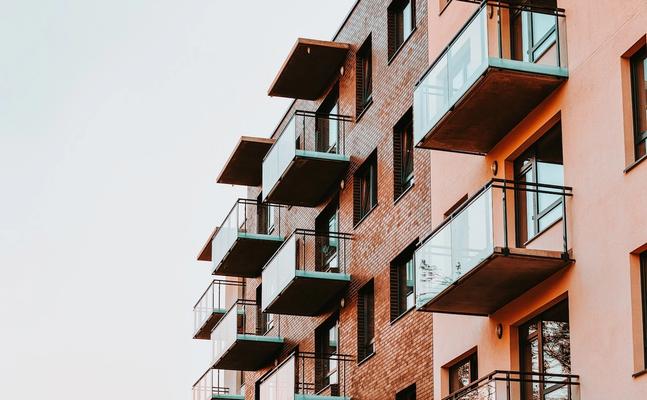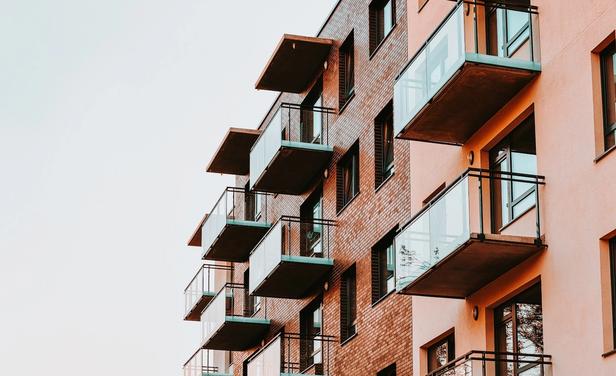Subscribe to our newsletter
As a multifamily owner and operator, high-speed wireless internet is one of the most popular amenities you can offer your residents. For most of them, reliable WiFi isn’t a luxury—it’s an expectation.
In a 2022 NetGear study, nearly half of participants said they couldn’t live without strong in-home WiFi, and almost a third said an unreliable WiFi connection is one of their most significant stressors at home. And in a 2023 SmartRent and Parks Associates survey, renters ranked WiFi as their third priority, tied with laundry facilities and following only rent and safety.
Want to choose the best WiFi solution for your community? Here’s what to consider when selecting internet for apartment buildings.

Considerations for choosing the best WiFi solution
Your residents should be able to use WiFi without worrying about complex setups, slow speeds, dead zones, security, or other hassles. Keep these factors in mind when comparing solutions for your community.
Scalability
Because your WiFi network serves multiple residents and the number of those residents may vary, it needs to be scalable. In other words, your network must be able to expand or contract based on the number of devices and users it serves, without slowing down or losing reliability. Make sure you can extend access points, add extra ones, and increase bandwidth without costly upgrades.
Security
Your WiFi solution should incorporate strong security protocols to protect residents’ data. Look for a solution that supports WiFi Protected Access 3 (WPA3). This standard makes it harder for attackers to crack passwords and access unencrypted data over open WiFi networks. Your solution should also incorporate regular firmware updates to deter hackers.
Coverage range
Many factors can impact WiFi coverage. These include the size and layout of a community, the building materials it’s constructed of, and interference from neighboring networks. You may want to conduct a site survey—a detailed analysis of the coverage area—to help determine your coverage needs.
Management tools
Cloud-based management tools make it easy to access information from afar. That means building owners or property managers can more easily monitor the WiFi network. A centralized platform simplifies configuration and maintenance tasks. Look for a solution that offers traffic analysis and reporting to help you assess network usage trends and plan for upgrades.
Support and maintenance
Look for a provider that offers prompt technical support and conducts regular maintenance. These measures prevent downtime and disruptions for residents.
Cost
Consider the upfront costs of a WiFi solution and the ongoing expenses related to it. The upfront costs may include the hardware price, installation fees, and infrastructure upgrades. Ongoing expenses may include subscription, maintenance, and monthly internet service provider (ISP) fees. Factor in the long-term value of the solution. A scalable, secure solution may prevent costly downtime, maintenance needs, and security risks.
WiFi options for multifamily communities
Keeping in mind the above considerations for selecting WiFi for your community, here’s a brief primer on different WiFi options for communities.
Retail WiFi
Residents buy their own apartment internet plans, often from different ISPs, and use their WiFi routers as access points. The community buys a broadband service package, including a modem and router, for administrative needs and to provide free WiFi in common areas.
Keep in mind that, with a retail WiFi setup, competing access points throughout the community can interfere with each other. This interference may slow down connections and make connectivity less reliable. Also, residents must switch networks if they want to access WiFi in common areas.
Bulk WiFi
A single ISP provides internet for the entire community. As with retail WiFi, residents buy their own internet service and connect to personal access points. The ISP may offer lower prices for bulk purchases but may require the community to sign a long-term contract.
As with retail WiFi, signals can interfere with each other. Plus, residents may lose wireless access or need to switch networks as they move through the community.
Managed WiFi
The owner (or a third-party provider) manages all the WiFi access points to provide more reliable coverage and connectivity. This solution solves many of the internet issues common in multifamily communities. Residents can move through the community on the same network. But, depending on the solution, all users may share a single login and password, which can come with security concerns.
Community WiFi
Community WiFi is a step up from managed WiFi as it’s specifically designed for a community setting. Apartment owners usually own the shared WiFi access points and can generate revenue from them by offering residents premium internet service. Owners typically collaborate with a third-party company to design and manage the WiFi system. This company strategically places shared access points to ensure excellent connectivity throughout the community.
Community WiFi with a strong mesh system is usually the best option for multifamily communities and apartment complexes. Mesh networks use multiple access points in strategic places to make the WiFi experience smooth and consistent. The network automatically finds the most efficient path to send traffic between nodes (whether connected wirelessly or through ethernet cables). This feature improves speed and lowers the risk of dead spots or weak signals.
Community WiFi allows each resident to access the network with a unique service set identifier (WiFi network name) and password. Residents can roam the community without losing access or switching networks.
Advantages of Community WiFi
Community WiFi emerges as a standout option for many multifamily communities. Here are some of the benefits it offers for property owners, site teams, and residents:
For owners
Residents may be willing to pay extra for community WiFi.
Community WiFi can be a significant, recurring revenue source.
Community WiFi may impress investors and increase the resale value of the community.
Community WiFi makes it easier to install other smart solutions, such as access control, tech-enabled homes, and self-guided tours.
For site teams
Community WiFi is a centralized solution, so site teams can easily monitor and manage the network.
It can help attract and retain residents because most renters seek reliable, high-speed WiFi.
It can reduce connectivity complaints.
With the right vendor, your site team has technical support to troubleshoot internet issues.
Your vendor can enable automatic WiFi setup at move-in and automatic deactivation at move-out.
For residents
Residents don’t need to worry about searching for the best internet service or working with a third-party ISP.
Setting up internet service when moving into a community is painless.
Residents have a consistent high-speed internet connection wherever they go in the community.
Residents can make and receive calls and send texts over the community WiFi network. This feature is attractive in areas with poor cellular reception.
It’s easy to pay for WiFi as part of the monthly rent payment.
Disadvantages of Community WiFi
Community WiFi offers many benefits. However, it’s important to understand the potential drawbacks because you may be able to pick a vendor that mitigates or eliminates them.
First, with Community WiFi, multiple users share bandwidth. For this reason, residents may experience slower speeds or reduced performance during peak hours. However, a reliable internet connection (more on that below) alleviates this concern, and your site team can use management tools to fairly allocate bandwidth based on users’ needs and usage patterns.
It’s also important to be aware of security concerns with shared internet solutions. Community WiFi is safer than most managed WiFi options because all users have their own networks and passwords. But you’ll want to make sure the vendor you choose ensures proper encryption and security measures.
Finally, you could face some challenges when deploying Community WiFi in an existing community. Many communities have signed bulk contracts with ISPs. Sometimes, ISPs even own the wiring infrastructure in apartment buildings. If you’re locked into a bulk contract and want to switch, review your contract closely and start planning the transition.
Even if you’re not locked into a contract, your residents may resist any change or disruption to the WiFi they’re used to. A gradual transition plan and excellent communication can help you make the switch easier for residents.

Most common types of internet in apartments
Before you decide on a WiFi solution for your community, it’s important to consider how different internet connection types can enhance your residents' connectivity experience. This knowledge lays the groundwork for optimizing WiFi in apartment buildings.
Fiber-Optic Internet
This wired connection type uses strands of plastic or glass to send data as light signals. It provides the most reliable internet connection and the highest bandwidth capacity. It can deliver download speeds as fast as 10 gigabits per second (Gbps) and boasts the same blazing-fast upload speeds.
Cable Internet
This wired connection type uses the same coaxial cable infrastructure as cable TV service. It provides reliable connectivity and relatively fast speeds. Depending on the plan, download speeds can reach 940 megabits per second (Mbps) and upload speeds can reach 50 Mbps. However, performance may diminish during peak hours.
Digital Subscriber Line (DSL) Internet
This wired connection type uses copper telephone lines to deliver internet access. It provides moderate speeds, with downloads usually topping out just above 100 Mbps, and performance may vary.
Fixed Wireless Internet
This wireless connection type uses radio signals transmitted from fixed antennas. It delivers high-speed internet through the air. The download speeds typically aren’t as fast as for cable or fiber-optic connections, ranging from 5 to 50 Mbps. The environment may affect the incoming signal.
Satellite Internet
This wireless connection type uses radio signals. The signals bounce off a central antenna to a satellite orbiting thousands of miles above Earth and back to a mounted dish outside the home (or community). The download speeds vary depending on the location, usually ranging from 12 to 100 Mbps.
Which connection type is best? Where fiber-optic internet is available, it offers unparalleled speed and reliability. It’s also highly scalable. That means the infrastructure can accommodate higher speeds and data volumes as your connectivity needs grow. Fiber-optic internet is a long-term investment that can enhance your resident experience and the value of your community.
Stay connected community-wide
Community WiFi over a fiber-optic network stands out as a savvy investment for multifamily communities. By investing in this type of WiFi infrastructure, you’ll make it easy for your residents to connect and stay connected. Plus, you’ll lay the foundation for adding the latest Internet of Things (IoT) systems, such as smart locks and thermostats. These tech-forward solutions attract prospects and make your residents’ lives more comfortable.
Switching to community WiFi may feel daunting. It’s important to choose an experienced, trustworthy partner. That way, you can count on 24/7 tech support, reliable connectivity, PMS integration, and frictionless resident onboarding.

